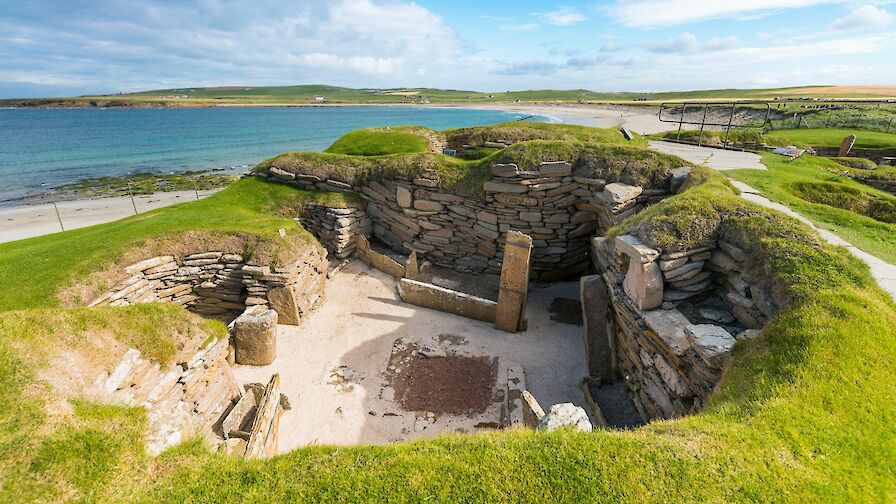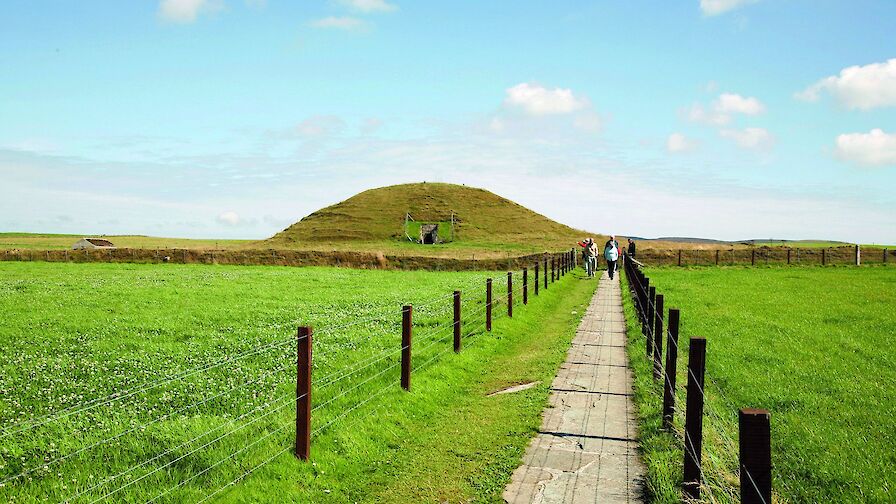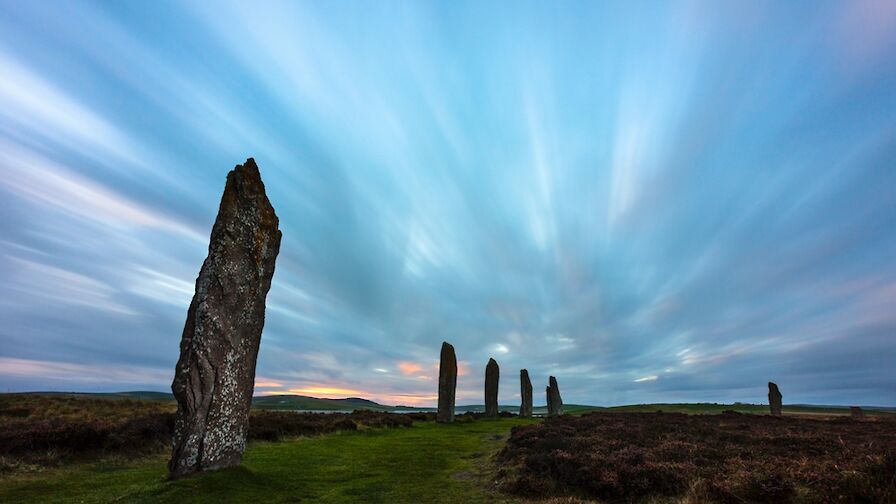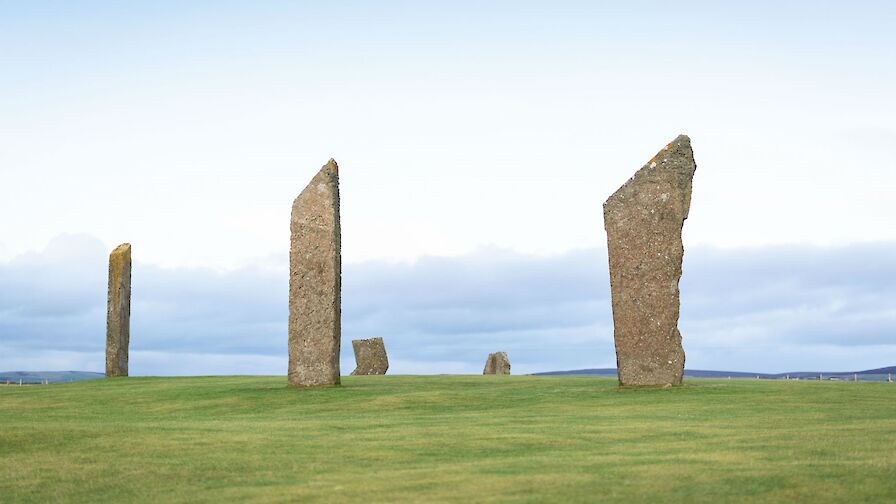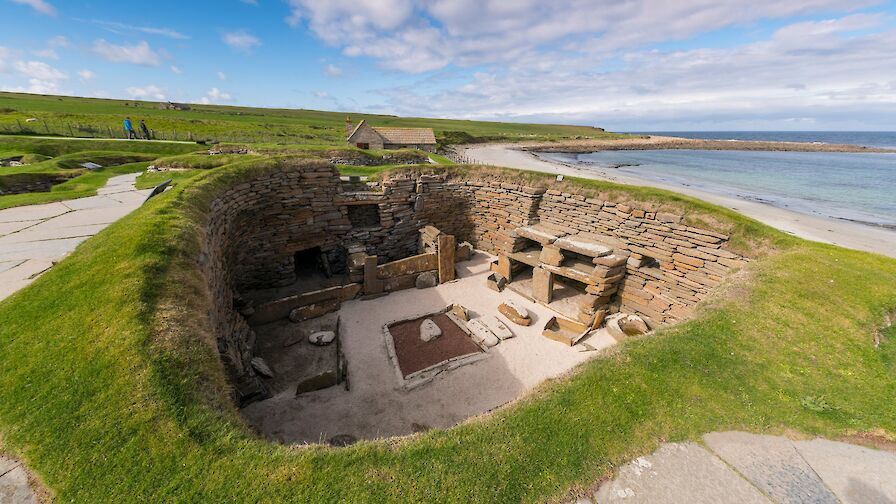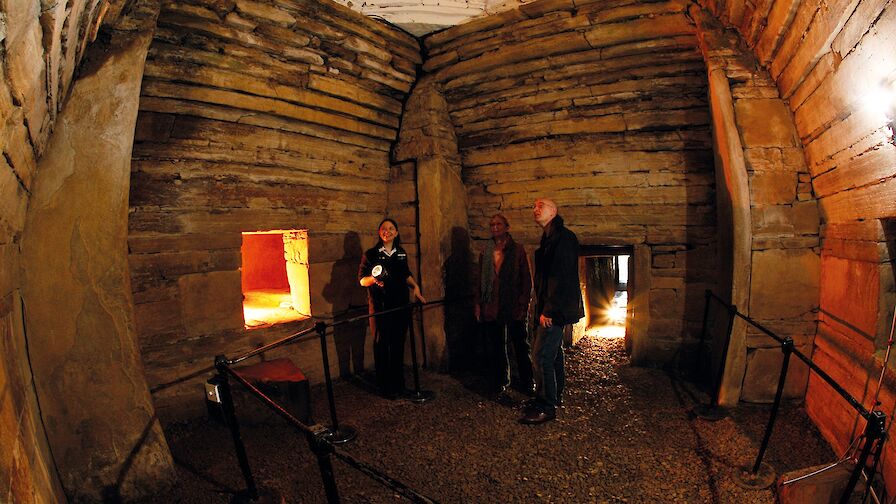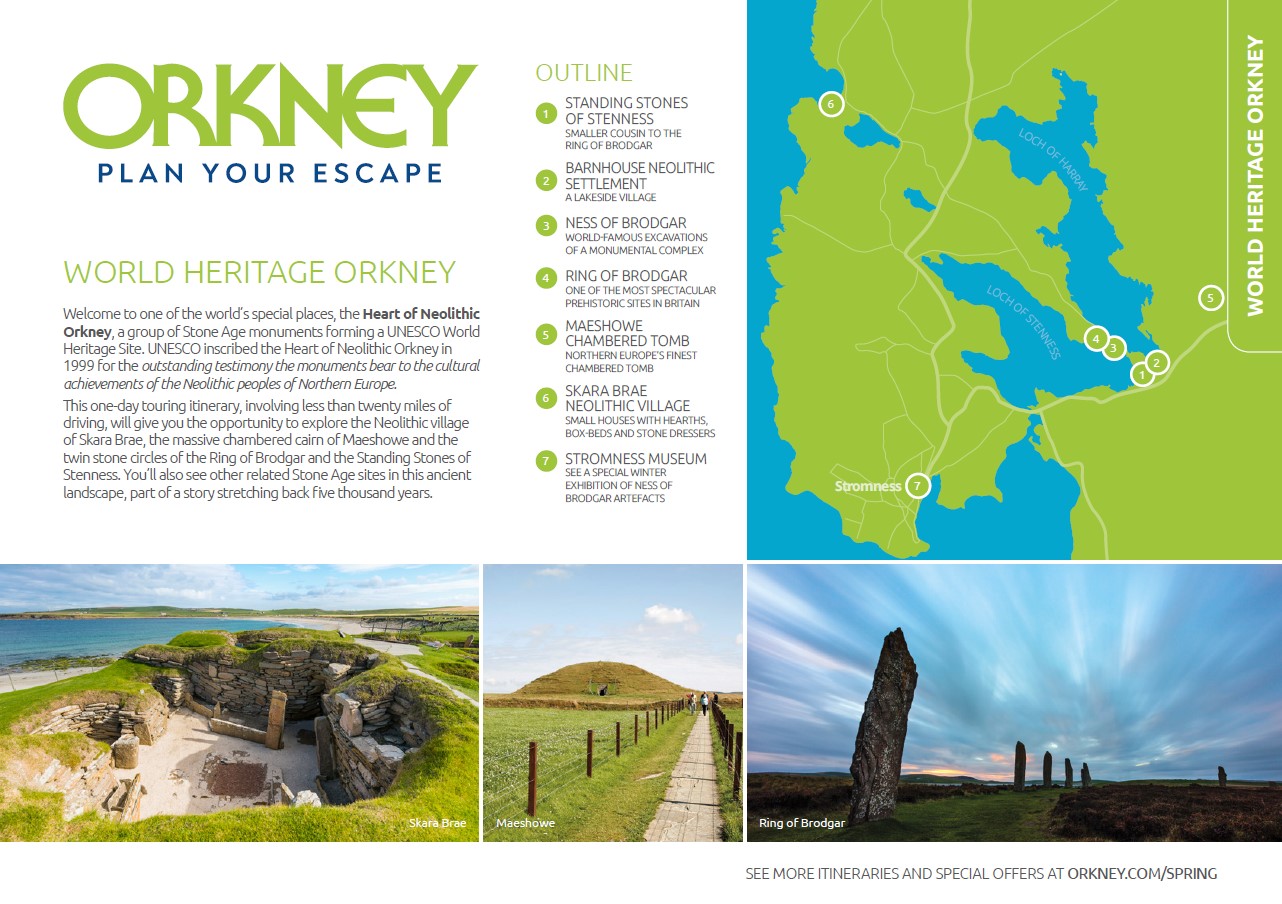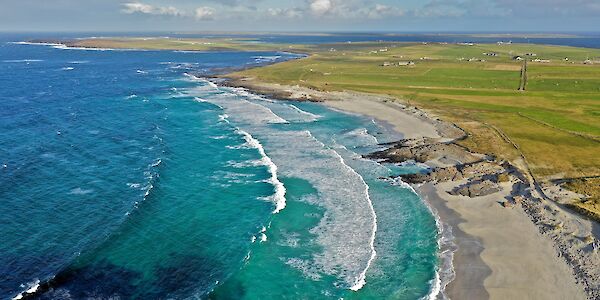Welcome to one of the world’s special places, the Heart of Neolithic Orkney, a group of Stone Age monuments forming a UNESCO World Heritage Site.
UNESCO inscribed the Heart of Neolithic Orkney in 1999 for the outstanding testimony the monuments bear to the cultural achievements of the Neolithic peoples of Northern Europe. This one-day touring itinerary, involving less than twenty miles of driving, will give you the opportunity to explore the Neolithic village of Skara Brae, the massive chambered cairn of Maeshowe and the twin stone circles of the Ring of Brodgar and the Standing Stones of Stenness. You’ll also see other related Stone Age sites in this ancient landscape, part of a story stretching back five thousand years.
Your Itinerary
- 1. Standing Stones of Stenness
Arriving at the 5000 year old Standing Stones of Stenness it is hard not to be awed by the size of the four standing stones, each about 5 metres tall, all that remain of the twelve original stones surrounded in prehistory by a bank and ditch. Our Neolithic ancestors quarried, transported and erected the stones without the aid of metal tools or machinery, in order to create an open-air ritual centre in the vast natural amphitheatre in the heart of Orkney’s Mainland. In common with the nearby Ring of Brodgar, the Standing Stones of Stenness monument is in the care of Historic Environment Scotland and there is no charge for access. World Heritage Rangers lead informative walks at both sites throughout the year.
- 2. Barnhouse Neolithic Settlement
A short walk down a track from the Standing Stones of Stenness is the Barnhouse settlement, the Neolithic occupants of which must have been among the monument builders. Imagine living here near the freshwater loch of Harray as the stone ring takes shape nearby. The stonework you see now at Barnhouse is reconstructed, but follows the plan of the original prehistoric settlement. There is a bird hide nearby, from which you can watch noisy flocks of overwintering birds on the loch.
- 3. Ring of Brodgar
Originally consisting of 60 standing stones (36 of which survive today) and surrounded by a deep rock-cut ditch, the Ring of Brodgar has been described as one of the most spectacular prehistoric sites in Britain, rivalling Avebury and Stonehenge. As you walk round the ring, just think about the scale of the effort required to create it and the strength of belief that motivated the builders. Orkney’s Stone Age farming communities were organised and industrious enough to undertake massive construction efforts, perhaps involving people from far and wide in communal projects.
- 4. Maeshowe Chambered Tomb
Standing just a mile away from the Ring of Brodgar is Maeshowe, one of Europe’s finest chambered tombs and a triumph of Neolithic construction ability. The low entrance passage leading to the burial chamber within, is aligned so that the midwinter sunset illuminates the interior. Perhaps Maeshowe and the other monuments in the Heart of Neolithic Orkney had astronomical purposes, helping these early farmers mark the changing seasons on which their lives depended. Maeshowe is in the care of Historic Environment Scotland, which provides access to the atmospheric interior of the tomb on a daily basis, by paid guided tour only. Tours, which must be booked well in advance, start from the Maeshowe visitor centre in nearby Stenness Village.
- 5. Skara Brae
The fourth location comprising the Heart of Neolithic Orkney is Skara Brae in the scenic Bay of Skaill. Here a Neolithic village was abandoned five millennia ago when it was overwhelmed by a sandstorm. The small houses preserved beneath the sand were exposed by a storm in the 19th century and the village, now in the care of Historic Environment Scotland, has been described as the best-preserved Neolithic settlement in Western Europe. It is open daily for an entry fee, and has a small visitor centre telling the story of Orkney’s Stone Age prehistory alongside a replica house which you can walk inside in order to see how our ancestors lived.
- 6. Stromness Museum
In Stromness, the Stromness Museum’s permanent collection includes fascinating artefacts found at Skara Brae. The museum’s opening hours are restricted from Monday to Saturday in the winter months so you should check before visiting, and there is an entry fee.
Other places to visit if you have more time
- The Orkney Museum in Kirkwall is open Monday to Friday all year round and tells the story of Orkney from the earliest times to the present day.
- You’ll find Neolithic sites throughout Orkney on the Mainland and the isles. Local guide books will help you make choices about which to visit depending on the time you have available.
